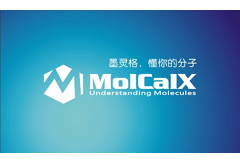活性测试抑制率60%可以发文章吗?
作者:linkedin, Medicinal Chemistry and Drug Discovery群组讨论
链接:http://www.linkedin.com/groups/923867/923867-6121243251463774211
整理:肖高铿 2016-04-07
问题
Juan López
Associated Researcher at Forschungszentrum Jülich
Is worth publishing a compound that shows a 60% inhibition percentage?
Using Ligand Based Virtual Screening, we predicted some compounds for a certain enzyme. They were purchased and tested in enzymatic assays. One of the compounds shows a 60% inhibition percentage (at conc. 100 ug/ml), and its IC50 is around 50 ug/ml. My question here is , do you think this is worth publishing? Or should we try at other concentrations greater than 100ug/ml?
And if you think it is publishable, for which journal would you go?
评论
Randall Murphy:
I would view this as a possible lead only if there is some meaningful SAR around it and it is not a promiscuous ligand. Lacking these things it is not interesting. If there are interesting data supporting this contention I would certainly not publish it in such a preliminary state but use if to develop more potent and potentially useful compounds.
Paul Hawkins:
Randall is absolutely right. As someone who reviews a good number papers on this topic I believe that the field needs fewer publications where better virtual screening in combination with experimental verification and follow up work is done. Better VS work would mean appropriate null models (do you find anything if you don’t do computation but just have an experienced med chemist choose some compounds?). Better experimental work would involve the things Randall mentioned in his post.
Dirk Weigelt:
As always in life, there are no standard rules for what is a good (an publishable) inhibition and what not. An IC50 of 60 uM would be excellent for a fragment with a molecular weight of, say, 150 Dalton. But if I did the maths correctly, your compound’s weight is around whopping 830 Dalton. That’s not even a small molecule, let alone a fragment. As an inhibitor of a protein-protein interaction, this would be quite interesting even at MW 830, but for an enzyme target it’s 3-4 orders of magnitude too weak, especially if you started from a known ligand. Might be a different story if you had targeted an allosteric site. Try to split it up your potential hit into minor structures, maybe you are able to improve inhibition that way.
Ebukah-Joseph Oguegbulu:
I agree with Dirk through and through.
Bob Reynolds:
All the comments/suggestions have been excellent. In addition to those recommendations, I would highly suggest that you test solubility to ensure that you are not simply seeing promiscuous compound aggregation/precipitation effects at those high concentrations. Solubility predictors are available online, I believe, but it is also easy enough to run concentration versus compound line broadening effects using assay relevant buffer systems and 1H-NMR.
Mark Shenderovich:
Juan, you should have had a few active compounds to select a pharmacophore model or a template for ligand-based VS. Therefore, you may have some SAR. I agree with previous comments that a single “hit” with IC50 of 60 uM is not publushable. However, you may try to split it into smaller fragments and compare them to known actives. If your compound is a synthetic product, building blocks and precursors used for synthesis may be commercially available. Try to obtain and test them. With a little bit of luck you may get better small molecule hits.
Geoffrey Kelso:
Although an IC50 of 60uM may not be exciting as 60 nM it is worth reporting as it provides a useful resource to anybody else who comes up with the same idea to test the compound in the same system in the future. The main problem may be getting such an “uninteresting” result published.
Kalviņš Ivars:
Any information about biological activity of compounds is valuable, because on the market there are many compounds with EC50>10 microgramm0. It will serve as starting point for medicinal chemists to improove the structure, if necessarry
Gene Lapa:
I’m agree with Dirk …. As always in life …
It looks like informational garbage without tiny details.
But, it shall be taken into account that 100 ug/ml (like 1000 uM) is a concentration of non specific interaction. It could be better to show some selectity this ligand among nearest member of protein family.
I know that in a lot of labs there is a threshold of inhibition as 25% at 50 uM or IC50 as a 10 uM and less.
If you’re compound have poor solubility (less that 0.1 mg/ml) then even 1 uM of IC50 will be useless. You cannot reach working concentration in vivo model.
I think that before publication it could be good idea to make h2l chemical optimization of SAR.
Good luck Juan
Balachandra Bandodkar:
There are many useful points shared here. I feel it is publishable provided:
a. The molecule has a high ligand efficiency.
b. its solubility is higher than the IC50.
c. The inhibition is against a valuable target for which inhibition is not easily achieved /known
d. Few compounds in the same class give you a hint of SAR and possibility of improving the potency.
The publishers may look at the fact that though weak, this has a way forward.



